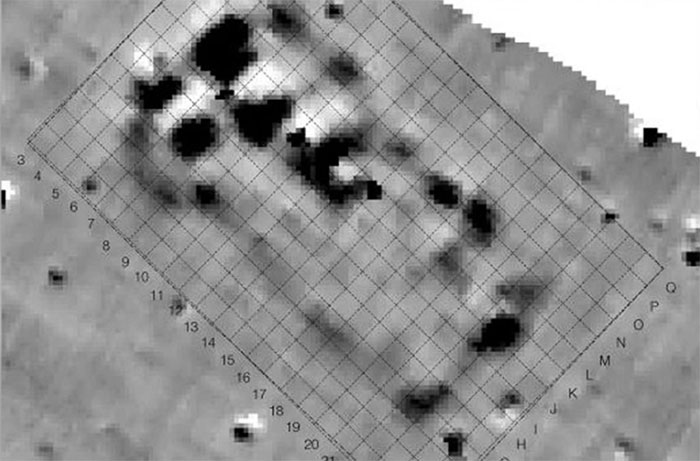The 'superstructure' of the mysterious Tripolye culture was unearthed in Ukraine
The Tripolye culture was a post-Neolithic culture that flourished during the period of time from about 5400 BC to 2750 BC in the area of Dnister (Nistru) - Dnieper of present day Moldova, Romania and Ukraine. This culture has always attracted the special attention of archaeologists around the world.
Therefore, the excavation of an area considered to be the center of the Stone Age community in Ukraine is helping to explain why large groups of tens of thousands of people flourished and later collapsed more than 5,000. last year.
The excavation area in Ukraine is considered to be much larger than the houses around it, though not particularly large by modern standards.

The mysterious 'superstructure' area in Ukraine has just been found.
At about 190m 2 , the structure is about the size of a modest American home. However, some Eastern European megacities have an area of up to 1,680m2.
Many underground structures have been discovered through methods of using magnetic anomalies to detect. Now, the actual excavation of a super infrastructure at a site called Maidanetske shows buildings that can be used for everyday activities, like food preparation, storage and dining. .
"It's similar to activities done in normal houses , " said Robert Hofmann, an archaeologist at Christian-Albrechts University in Kiel, Germany, who led the new study.
The megacities were built by the Tripolye culture, a civilization stretching from the Carpathian mountains to the Dnieper River during the Stone Age. From about 4100 BC. to 3600 BC. The Tripolye people have built large communities consisting of thousands of houses.
Maidanetske, in modern Ukraine, has about 3,000 individual houses, although it is unclear whether all of them will exist at the same time or if there are periods of demolition and reconstruction. Therefore, the populations of these communities tend to be difficult to determine, Hofmann said. Maidanetske can be home to about 5,000 people or 15,000 people.
Archaeologists also debate whether the area is year-round settlement or seasonal gathering points. The Tripolye are cereal farmers, as well as herdsmen.
Tripolye houses are often arranged in concentric circles, sometimes dotted with squares anchored by large rectangular buildings that archaeologists call "megacities".
Hofmann and colleagues compared their Maidanetske excavations with magnetic and archaeological data from 12 other megacities in Maidanetske and 104 others from 19 different locations across Eastern Europe.
Scattered in the structure, archaeologists found pottery, including sealed jars and kitchen utensils. There are also bones scattered near the fireplace, probably from the last meal before the building was abandoned.
- Discovered a 6000-year-old ancient temple in Ukraine
- Detecting mysterious flying objects near the synagogue in Ukraine
- Discovering a 2,000-year-old treasure at the ancient fortress
- The couple's couple hugged each other tightly for 3,000 years
- Discovering a sundial over 3,000 years old
- This is Ukraine's
- Ukraine celebrates the 25th anniversary of the Chernobyl disaster
- See snake head 2 albino in Ukraine
- Ukraine: The second 'Chernobyl disaster'
- Interesting story about
- In 2013, Brazil and Ukraine will launch joint satellites
- Nuclear power plants in Ukraine have problems
 The truth about the mysterious red-haired giant at Lovelock Cave
The truth about the mysterious red-haired giant at Lovelock Cave Inunaki Tunnel: The haunted road leading into Japan's 'village of death'
Inunaki Tunnel: The haunted road leading into Japan's 'village of death' The mystery of the phenomenon of human reflection before dying
The mystery of the phenomenon of human reflection before dying 6 mysterious phenomena, although science has been developed for a long time, still cannot be answered
6 mysterious phenomena, although science has been developed for a long time, still cannot be answered